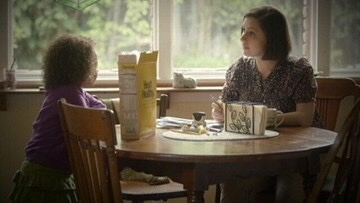On March 8, the Binghamton University Association of Mixed Students (BAMS) hosted a meeting called, “Media Representation of Mixed People.” The event began with a game of Kahoot! followed by a presentation and open discussion on how multiracial people were represented in movies and television shows.
The questions brought out the problems within media representation of not only mixed people but people of color as a whole. During the Kahoot! BAMS shared media representation statistics, including the fact that Latina actress Lupe Ontiveros claimed to have played a maid over 150 times throughout her career.
“Latinx individuals made up 17 percent of the US population in 2016, but their percentage on-screen was less than 3.1 percent,” a member of BAMS said. “How many times has Octavia Spencer played a maid, nurse or cleaner? Twenty-one times.”
Members of BAMS then presented a 2013 Cheerios commercial that received backlash because it featured a biracial child speaking to her white mother before conversing with her Black father. This simple and friendly Cheerios commercial was met with racist remarks and hateful comments. BAMS members cited the popular forms of mixed people on television, some of which included the shows “mixed-ish,” “To All The Boys I’ve Loved Before” and “Ginny & Georgia.”
BAMS described some of the difficulties in accurately portraying mixed people, mentioning the ways in which shows neglect to represent both cultures of multiracial characters and gloss over the fact that a character is mixed. In addition, one parent over another tends to be favored and have more screen time. In “To All The Boys I’ve Loved Before,” Lara Jean Covey’s Korean mother dies, leading to her white father to be the only parent with screen time, and in “Ginny & Georgia,” Ginny’s Black father is not featured as part of the family unit.
BAMS argued that Netflix tends to misrepresent multiracial families and feed into stereotypes, mentioning that the screenwriter for “Ginny & Georgia” is white and this may contribute to the lack of accurate representation of the mixed characters in the show. One of the BAMS members quoted a scene in the show where the character Hunter Chen argues with Ginny over whose identity struggles more in society. Chen said, “oppression Olympics, let’s go” at the end of the argument. They mentioned how this scene and trailer for the show turned them away from the series. The scene fed into negative stereotypes and brought out the ways in which a mixed person was misrepresented. BAMS members stated that none of the popular shows and movies accurately delve into the lives of a multiracial person. The association also mentioned that some of the problems in regards to accurate on-screen representation of mixed people stem from the lack of mixed people in the industry.
Divine Alvarez, historian for BAMS and junior double-majoring in psychology and Latin American and Caribbean Studies, said that though mixed representation was moving in a positive direction, she wanted the media to portray multiracial people on a more personal level.
“If mixed representation showed the personal side of it, the people who are just trying to figure themselves out,” Alvarez said. “Instead of showing how the world may perceive you… or the outside looking in on it. I rather have a more inward perspective on it in the characters, like introspection.”
Ruby Xiao, president of BAMS and junior majoring in accounting, suggested that the media would benefit from having more mixed people taking part in the media process on and off-screen.
“Media just needs more representation of mixed people and more accurate representation,” Xiao said. “Not just on-screen like what we talked about. Even behind the screen, the writing process, screening process, producing, all the other stuff behind the screens. There’s definitely a need of mixed people to help that process — to help make the experience for the audience better.”



